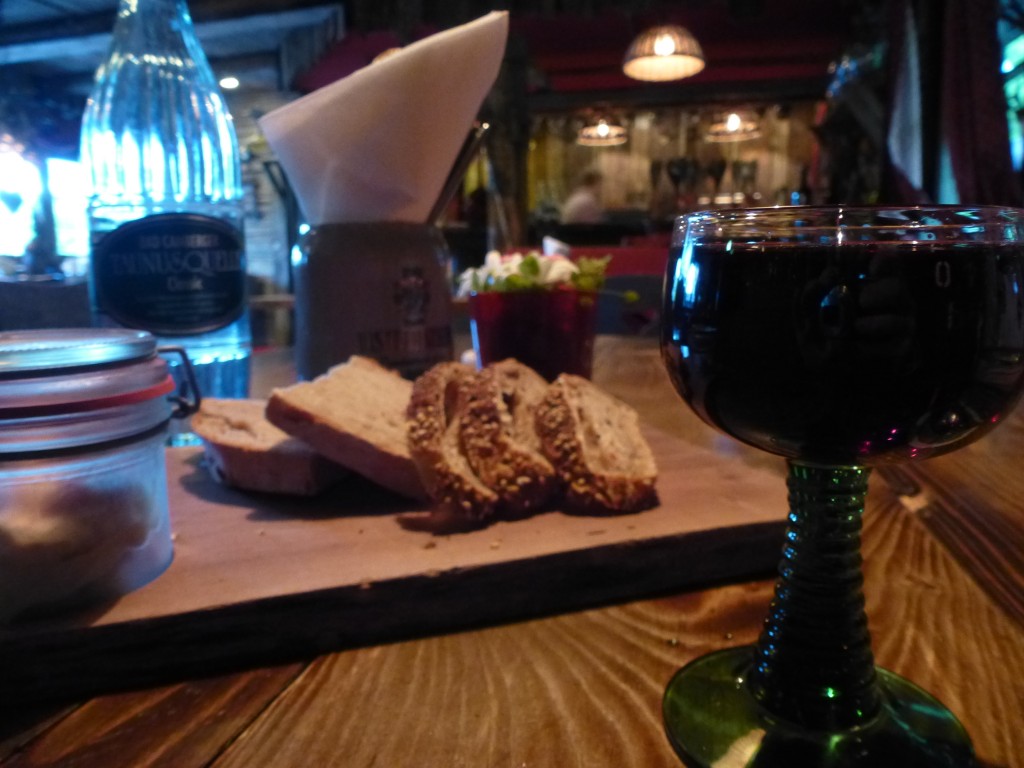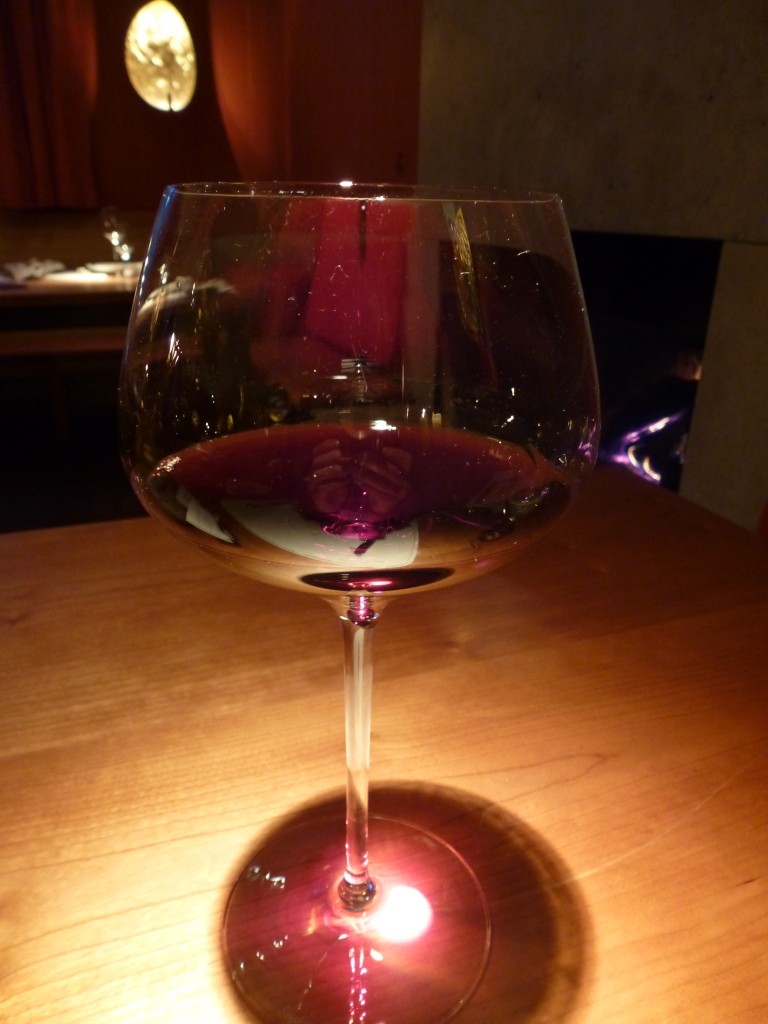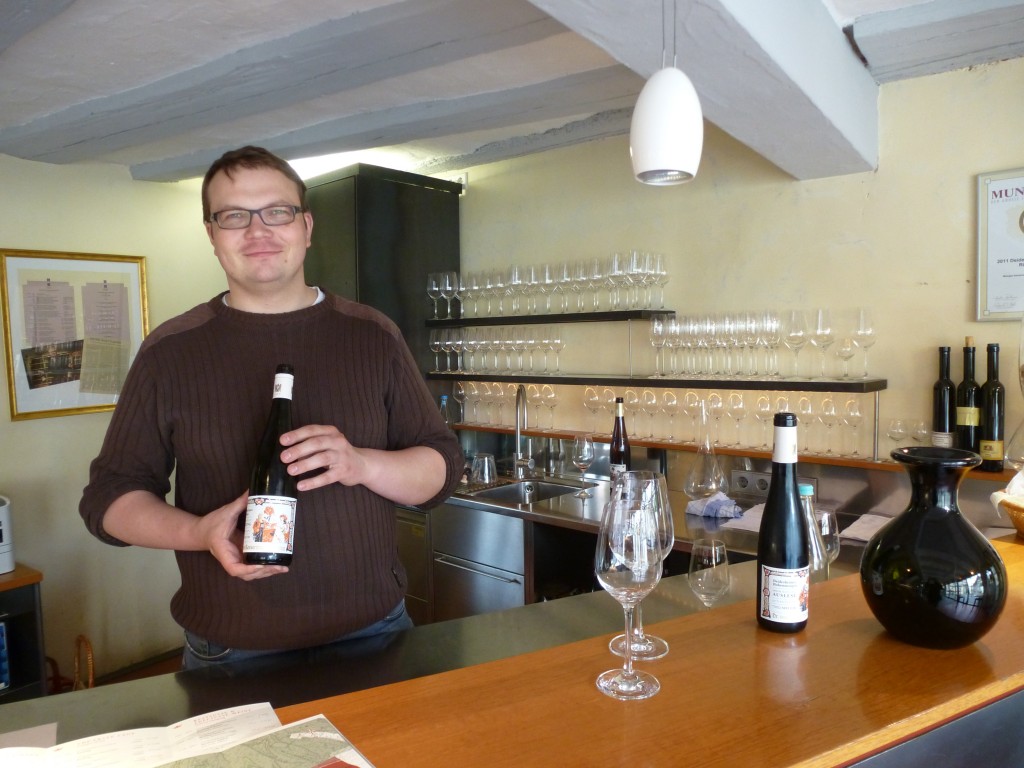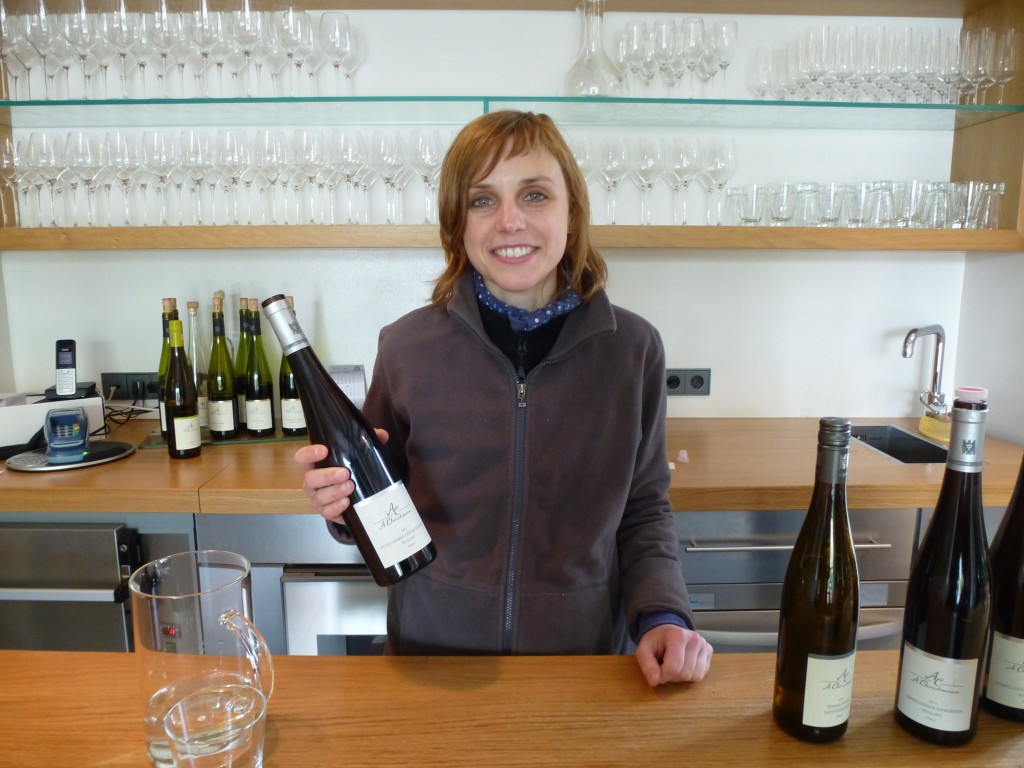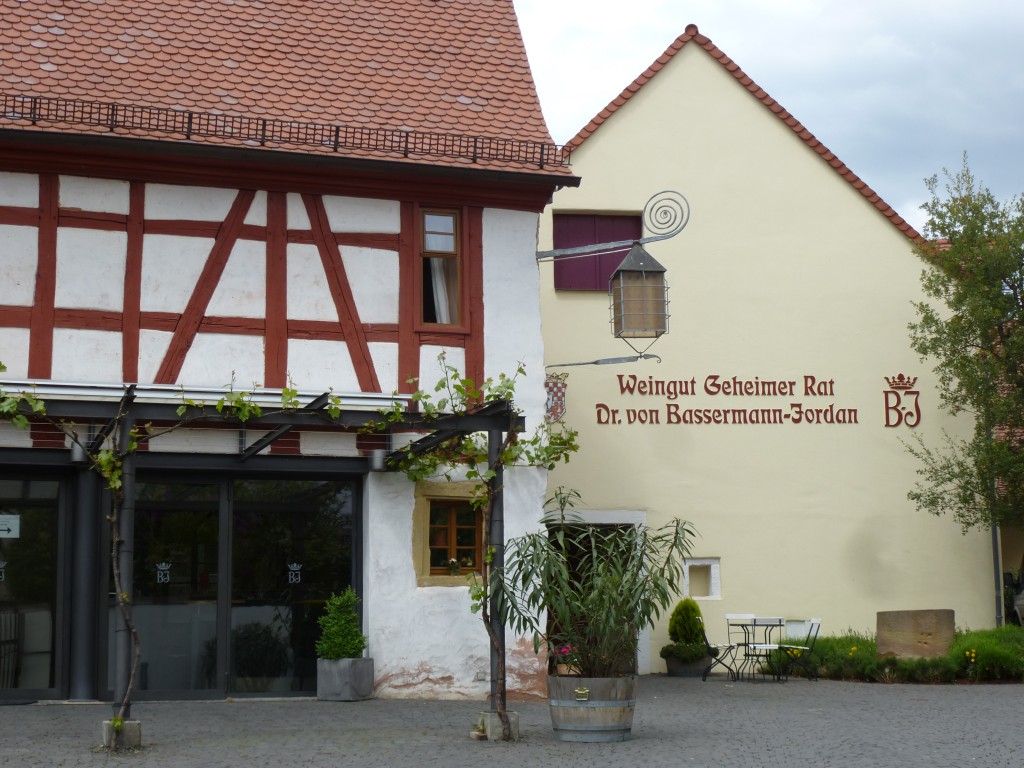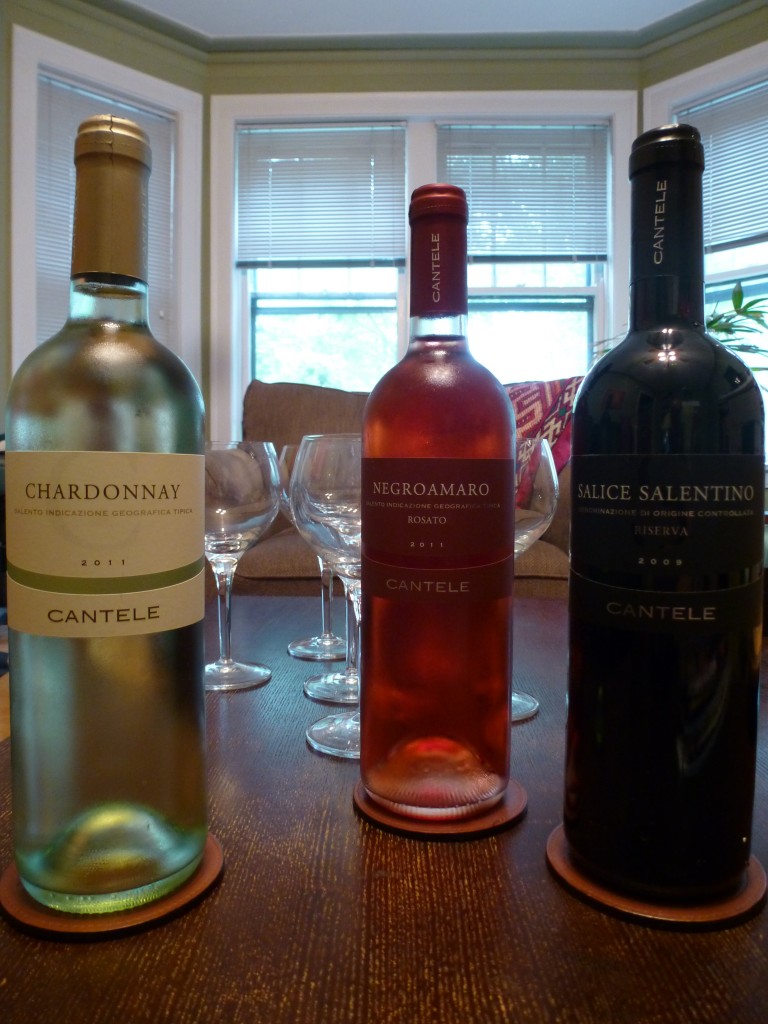Three Unusual German Reds
In addition to Spätburgunder (Pinot Noir), Germany grows a number of other red grape varieties quite successfully, as I rediscovered on a recent visit. An unusual but traditional varietal such as Lemberger was fun to drink, but what really made me want to stand up and yodel was the Merlot and the Cabernet Sauvignon/Merlot blend I tried. Wow. Who would have thought that these varieties, which reach their apex in warm, maritime Bordeaux, could do so well in cool, continental Germany?
Apparently, some smart German winemakers thought so. The World Atlas of Wine notes that there have been some “convincing experiments” with red Bordeaux varieties in Württemberg, and you can consider me convinced. Not all German reds are worth trying — many are still thin and sweet — but after tasting the Spätburgunders described in this post and the wines detailed below, I am certain that there is a German red for everyone.
2010 Staatsweingut Weinsberg Lemberger Trocken: This wine comes from Württemberg, an area just north of Stuttgart which the Atlas says is “really red wine country.” It started fruity and sweet, and I feared it would be a simple snoozer, but then a blast of black-pepper spice kicked in, ensuring that there was no way I would sleep through this glass of wine. You might have tried a Lemberger and not known it — the variety is especially popular in Austria, where it’s known as Blaufränkisch.
2007 Geisel Weinbau Brentano “R” Markelsheimer Probstberg Merlot Trocken: I had a devil of a time finding a website for this single-vineyard wine (Probstberg is the vineyard name), but I have a sneaking suspicion it’s produced by the same Geisel family which owns the hotel where I tried it, the Königshof in Munich. The restaurant’s adventurous sommelier selected this wine from northern Württemberg to pair with a main course of rabbit with artichokes, spinach and saffron, and it was startlingly delicious. I knew I was in for a treat when I gave the wine a first sniff, enjoying the aroma of ripe red fruit and earth. It had a velvety texture, rich fruit and big but firmly controlled spice. Absolutely excellent.
2010 Weingut Fritz Wassmer “Cuvée Félix” Cabernet & Merlot: This Bordeaux-style blend comes from the far southwestern corner of Baden, the southwesternmost state of Germany. I felt especially excited to try it because it comes from a town called Bad Krozingen, just a few miles from where I studied abroad in Freiburg. Again there was that velvety red fruit that I love, followed by some soft spice and a smokey finish of tobacco. It paired perfectly with an insanely large portion of Zwiebelrostbraten (roast beef with caramelized onions), and, oddly enough, it worked with the asparagus as well.

